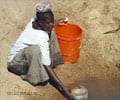Health care-associated infections pose a major patient safety problem in the developing world, reveals a World Health Organization (WHO) lead research project. This serious issue is scarcely addressed in the scientific literature. Though hundreds of millions of people are affected globally, precise numbers remain unknown. This is because of the inability of the vast majority of middle- and low-income countries to afford efficient national surveillance systems. The levels of health care-associated infection in developing nations are at least twice as high when compared to the high income countries. Study results were published in The Lancet, the leading medical journal. The report was based on the analysis of 220 previous cases studies.
Infections lead to prolonged hospital stay, increased resistance to life-saving medications and thus drives up costs for patients and their family. They create long-term disability and even lead to death. Hospital obtained pneumonia, surgical site infections, urinary tract and bloodstream infections are among major health problems within poorer nation’s hospitals. The contraction of malaria and tuberculosis lays additional burden.The data covering 13 years worth of research found healthcare-associated infection rates within developing countries was 15.5 per 100 patients. This value was 4.5 and 7.1 per 100 patients in USA and Europe respectively. The rate of infections obtained during intensive care within developing countries was alarmingly high. Critically ill patients admitted to hospital in low-income countries had at least double the device-associated health-care-associated infection rates of patients in industrialised countries. Limited resources available in developing countries contribute to major safety concerns for patients receiving treatment in hospitals.
The following are the risk factors listed by WHO:
• Poor hygiene and waste disposal
• Inadequate infrastructure and equipment
• Understaffing
• Overcrowding
• Lack of basic infection control knowledge and implementation
• Unsafe procedures
• Lack of guidelines and policies.
Long-term development of healthcare facilities, processes for measuring infection rates and pressure groups to minimize the impact of illness from this source are the three major players that reduces the infection burden of wealthy nations. Lack of these factors doesn’t mean it is impossible to save the developing world. Simple and low-cost interventions are available.
A change of health-care workers' behaviour in all settings is a must. Suggested solutions are:
• Training, education and good communication
• Apt usage of devices
• Following proper procedures
• Ensuring optimal hand hygiene practices
Establishment of effective simple and low-cost measures can reduce the burden of middle- and low-income countries.
• The Lancet
• WHO Media Centre
Source-Medindia









